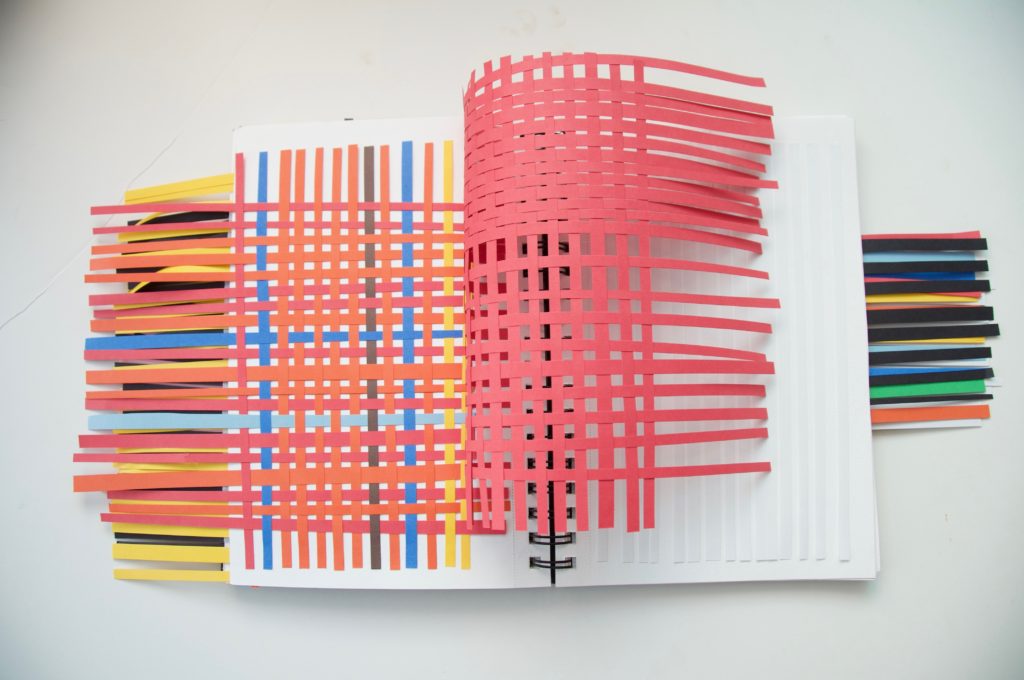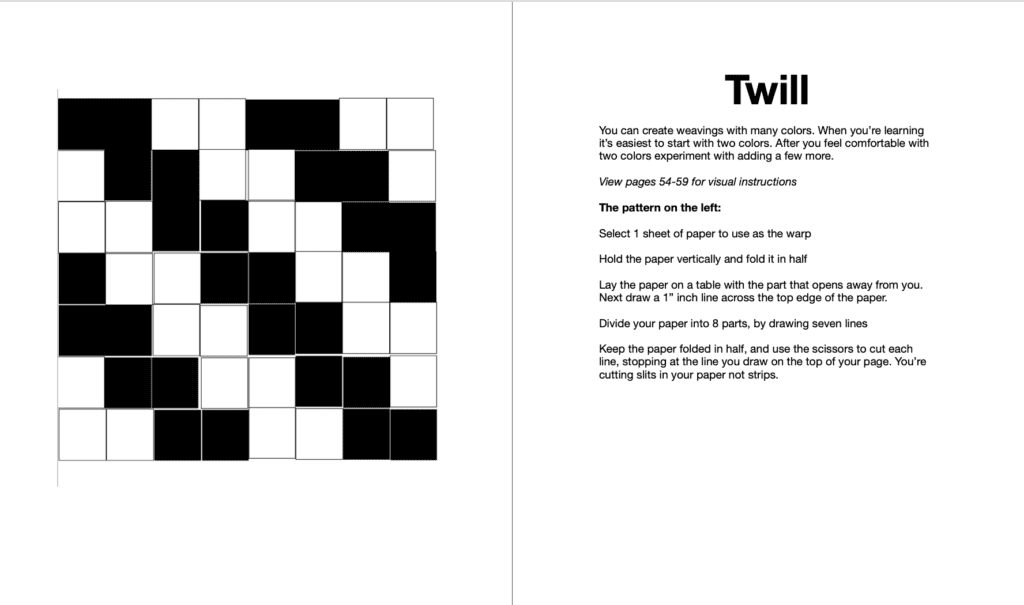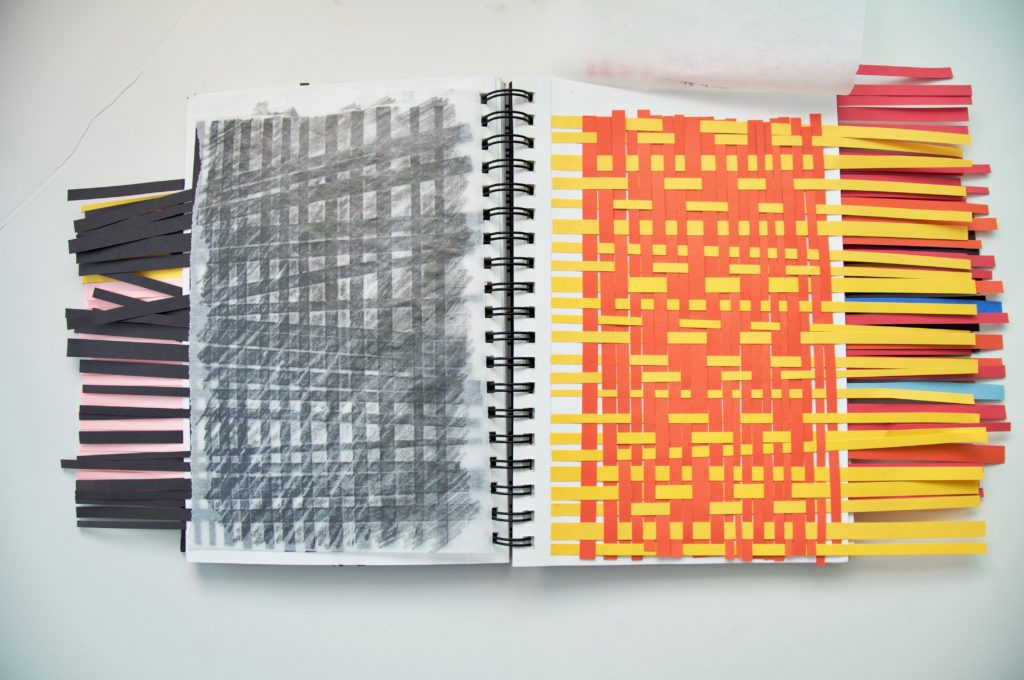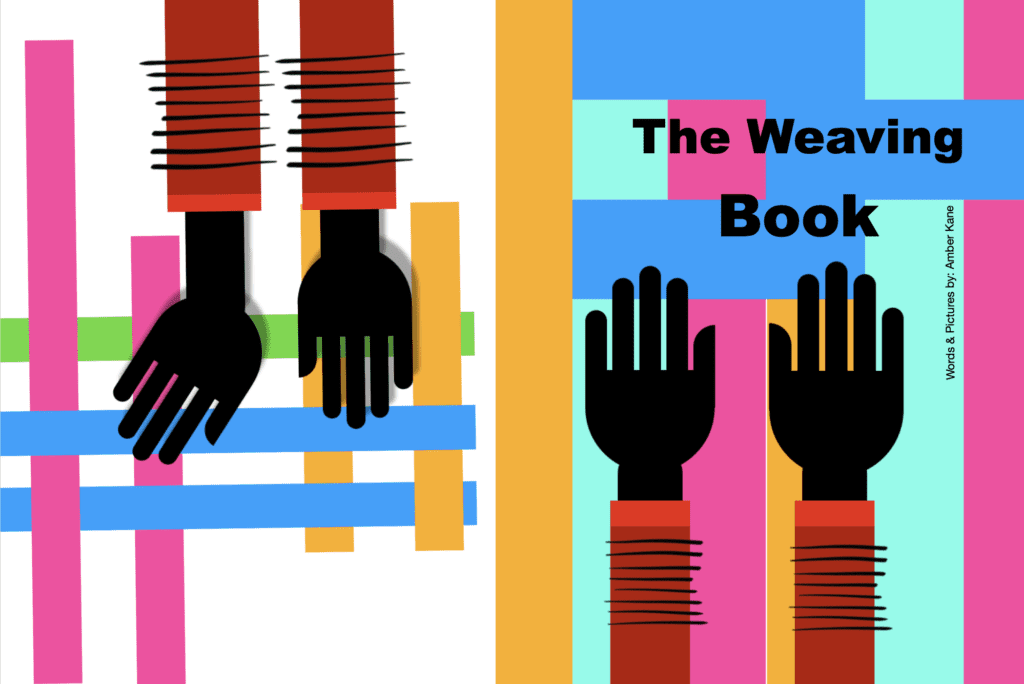Why You Should Learn Paper Weaving

It’s likely that at some point during your time in elementary art class, you learned about paper weaving (and if you didn’t, I’m sorry). You selected a few strips of pre-cut colored paper and then practiced going over and under, over and under, resulting in a simple pattern. In weaving terms, you learned to create a tabby or plain weave pattern. You might not have known how often you can observe and benefit from this pattern daily.
Look closely at your jeans; I’m guessing you will see the threads going over, under, over, under. Or look at your sheets or favorite flannel shirt; chances are, you’re benefiting from the interventional tabby weave. It creates a simple pattern with a strong structure.
When purchasing sheets, you probably want to look for a high thread count, but do you understand why it results in a softer sheet and usually a high price tag? Warp threads run vertically through the cloth, and the closer they are together, the smoother and softer the cloth. When working at a loom, weavers count the ends per inch, i.e., thread count. Higher thread counts are more expensive because they require more material, and when done by hand, they also take longer to set up. At its foundation, weaving is mathematical and can be as simple or complex as the artist desires.

The book Worn, by Sofi Thanhauser, shares this about the history of weaving silk,
“Pankenier believes that the silk loom was used to understand the complex movements of the stars because, in the Shang and early Zhou, the loom was the most complex mechanical device known and had been since Neolithic. Pure thread ranging from .70mm down to .35mm in thickness has survived from the Shang Dynasty, along with plain-weave silk fabric that has between fourteen and thirty individual threads per centimeter running across it. Threading these strands through individual heddles, devices that rise and lower the warp threads, is complex, precise work; as difficult the ancients imagined, as arranging the motions of the stars.” p.101
Most people’s knowledge of weaving is limited, missing out on the powerful and vast history. Before the days of fast fashion, most clothing was produced on a loom. Joseph Marie Jacquard invented the Jacquard loom in the 19th century, which informed and led to the invention of the computer. And computer coding has strong connections to weaving patterns. The Jacquard loom contained punch cards that would create complex woven designs based on a binary warp and weft threads system.

Paper weaving allows you to create patterns, explore weaving structures, and understand the fundamentals of weaving without incurring the cost of a loom and yarn. Miguel Arzabe is one of my favorite artists that weave with paper and canvas. He mixes images and colors and combines a range of patterns to create complex designs. Once you learn the basics of paper weaving, you can transfer that knowledge and use it to create three-dimensional forms, like basics. Or switch to fabric strips and practice weaving furniture.
